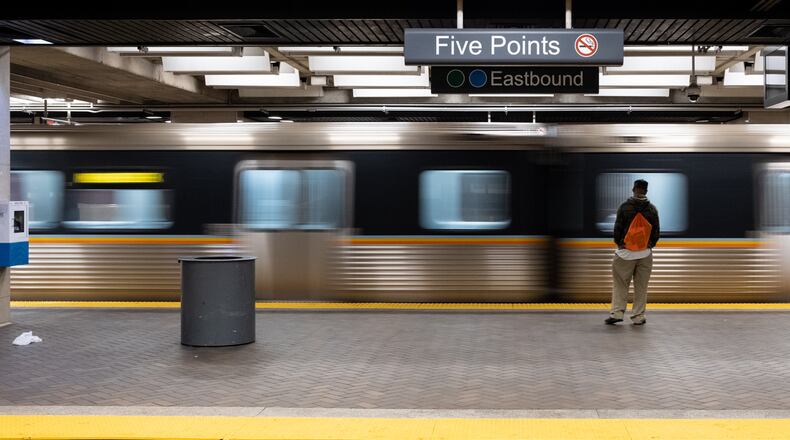A closer look at MARTA ridership trends underscores the fact that many low-income residents have little choice but to continue riding.
On Monday, the number of passenger boardings was down at all MARTA stations compared with the previous Monday, an analysis by The Atlanta Journal-Constitution found. But it fell the most along the corridor from downtown and Midtown to North Springs, which serves some relatively affluent areas.
» RELATED: With fewer passengers, metro Atlanta transit agencies cut service
» COMPLETE COVERAGE: Coronavirus in Georgia
Boardings fell less in areas south and west of the Five Points station, home to many low-income residents.
In fact, the wealth of the area surrounding a MARTA station is closely related to the size of the decrease in ridership over the past week, the AJC analysis found. Areas with a median income of $35,000 per year have seen decreased ridership of about 35%, while areas with a median income of $100,000 per year saw ridership decrease by about 52%.
For every $10,000 increase in the median income around a MARTA station, ridership decreased by 2.2%, the newspaper found. While that doesn’t seem like much, for a lower-income, large-ridership station such as College Park, that difference adds up to 1,000 extra riders a week at a time when public health officials are urging residents to stay home.
About the Author
Keep Reading
The Latest
Featured




